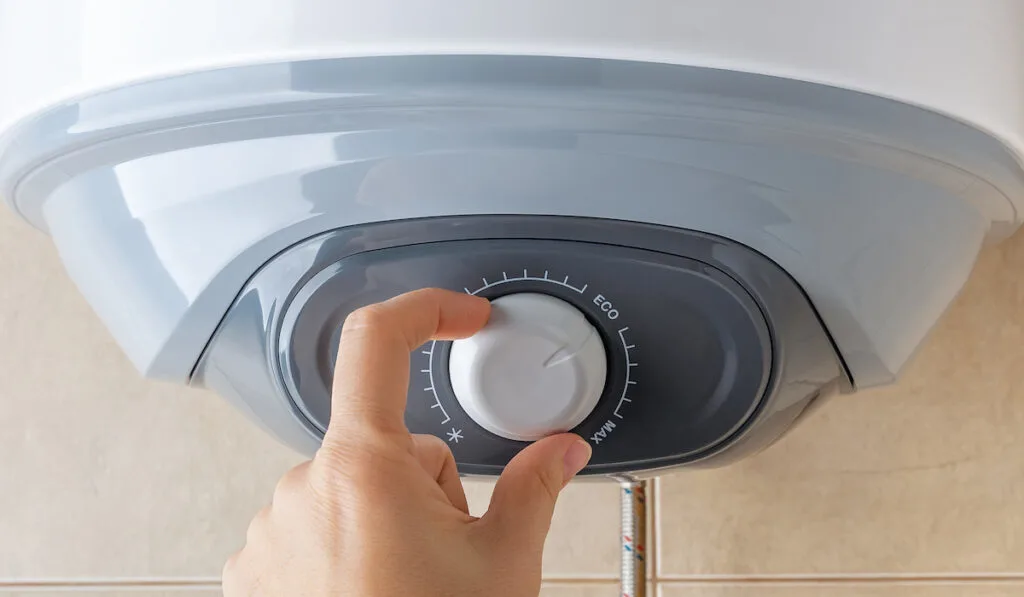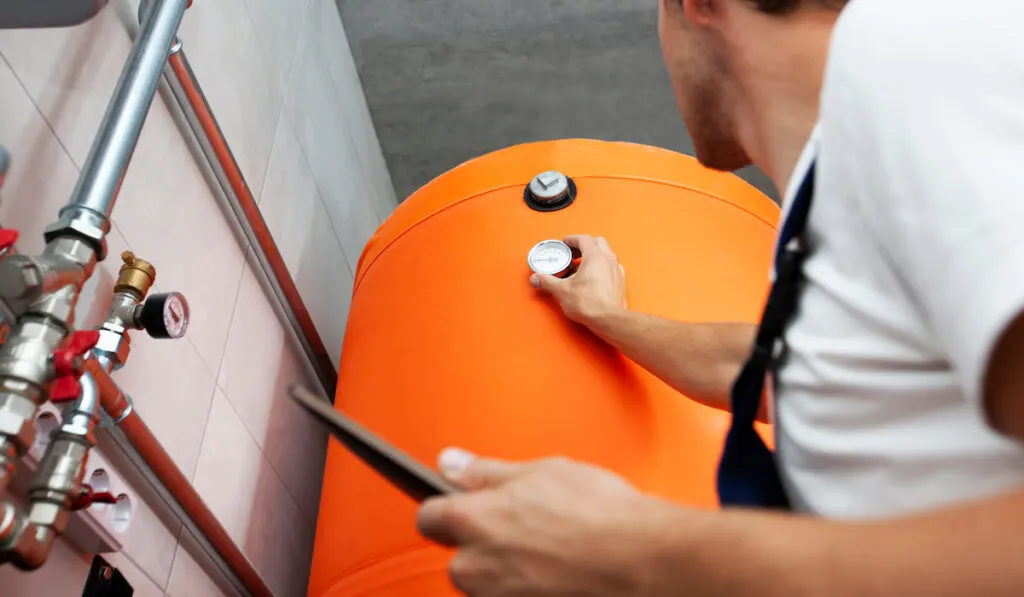*This post may have affiliate links, which means I may receive commissions if you choose to purchase through links I provide (at no extra cost to you). As an Amazon Associate, I earn from qualifying purchases. Please read my disclaimer for additional details.
Draining a water heater can be a messy business. Even though it’s a pain, draining your water heater should be done once a year to clear things out and prevent sediment build-up in your appliance.
Stopping sediment from accumulating will extend the lifespan of your heater and save you money long-term because you won’t have to replace it as often.
This is especially important for people who don’t have water softeners and live in places with hard water.
A lot of houses have drains on the floor near the water heater where flushed water can flow from the appliance down into the plumbing system.
However, sometimes homes don’t have drains, so what do you do then? Thankfully there are still ways you can drain your water heater with no floor drain.

Table of Contents
How to Drain a Hot Water Heater
Whether you’ve got a floor drain or not, the process to empty and flush your water heater will be the same. Here are some steps you can follow to drain the water heater.
Step 1 – Finding the drain
Every water heater will have a drain at the bottom of the tank. You’re going to need to find the drain so you can attach a hose that will feed into either a floor drain or, in your case, something farther away like a bathtub or a window.
Don’t make the mistake of trying to drain your water heater into a bucket or anything small. You’re dealing with a lot of water, so you’re going to need somewhere for it to go.
Step 2 – Turn off the gas
Most homes use a gas water heater. Anytime you’re working around gas lines or any other sort of fire hazard, you will want to make sure you take proper safety precautions. For safety, turn off the gas source to the water heater and put out the pilot light.
It will give you peace of mind and prevent anything dangerous from happening. If your heater is electric, all you have to do is unplug it.
Step 3 – Start emptying the water heater

Even though it’s called flushing your water heater, you don’t really need to empty it all of the way to clear out the sediment.
Sediment is heavy, so it usually gathers at the bottom of the tank. As you open the drain, the force of the water will push out all of the sediment early on. Most of the time, the water at the top is perfectly fine.
Step 4 – Opening the pressure valve
A lot of water heaters have a pressure valve that acts as a failsafe to keep the water inside in case the drain is opened accidentally or it fails. To get the water moving, you’re going to need to open the pressure relief valve as well.
Step 5 – Check on the water flow
If you don’t have a floor drain near your water heater, you can’t start the draining process and go do something else. That’s a quick recipe for soaked carpets or wood floors in your home. You’re going to need to stay on top of things the entire time.
Luckily, it shouldn’t take too long. Move back and forth between the water heater and wherever the hose attached to the drain is emptying. Make sure that the water is draining well and it’s not causing any flooding anywhere.
Using a Remote Sump Pump
Depending on where your water heater is, its size, and where the nearest tub, toilet, or window is, gravity will do a lot of the heavy lifting as you drain things out.
However, you should know that gravity doesn’t always work, and sometimes you’re going to need some extra power to push the water through the hose.
A remote sump pump may be required to carry the water from the heater drain pump to wherever you need to empty out. You can look online for remote sump pumps or ask around at your local hardware store to see if you can rent one for the project.
All you have to do is get two sections of hose. One hose will attach to the water heater drain and the sump pump, and then the other section will go from the sump pump into the drain wherever it is.

Call a Plumber or DIY?
A lot of homeowners don’t want to deal with anything plumbing-related and for good reason. Screwups can be costly. One mistake, and the next thing you know you’re telling everyone in the house they can’t shower for two days.
Draining a water heater, even for folks who don’t have a floor drain, isn’t terribly complicated.
Still, if you’re worried about it, you can always pay a professional plumber to do it the first time around. Watching how they do it can give you the confidence you need to tackle it yourself next year.
Plumbers will have remote sump pumps on hand to make quick work of draining your heater.
Final Thoughts
Homes without floor drains are fairly common these days. Homeowners and plumbers have adjusted to new plumbing realities and have made draining water heaters fairly easy.
Draining the heater will extend the lifespan of your appliance and stop hard water from building up inside as quickly.
The entire process can be done in a day. Just make sure you have plenty of old towels on hand to handle spills for your first time. If anything goes wrong, you can quickly close the drain and stop water from flowing as you adjust and try again.
